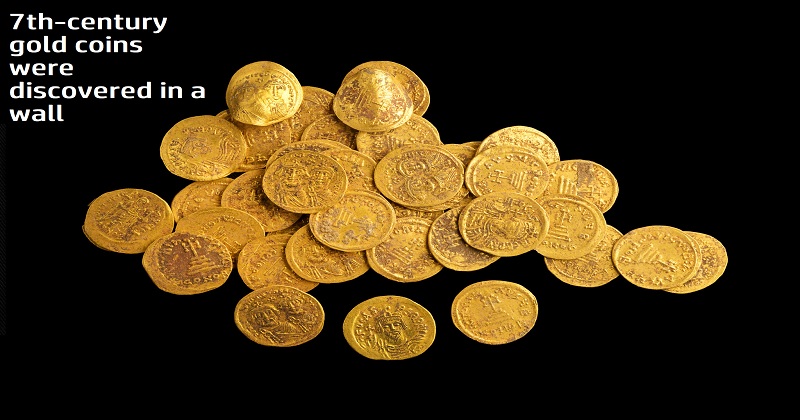
Archaeologists in Israel claim to have found 44 pieces of pure gold dating to the seventh century hidden under a wall at a nature reserve.
The 170g-or-so treasure, according to experts, was found in the Hermon Stream (Banias) site and was hidden during the Muslim conquest of the area in 635.
They said that the coins revealed details regarding the decline of Byzantine influence in the area.
The Byzantine Empire was the name given to the eastern region of the Roman Empire, which lasted for more than a thousand years.
Director of the excavation Yoav Lerer said, ‘We can imagine the owner hiding his money amid the possibility of conflict, hoping to return one day to retrieve his property.’
According to Israeli authorities, building ruins, water conduits and pipes, bronze coins, and much more were discovered during the excavation in a residential sector of the ancient city in addition to the gold coins.
According to Dr. Gabriela Bijovsky, a numismatic (money) specialist at the Israel Antiquities Authority, some of the coins were from Emperor Phocas (602–610), while the majority were from his successor Heraclius.
Banias holds a significant place in Christian history as the legendary site where Jesus allegedly told the apostle Peter, ‘On this rock, I will build my church.’

Post Your Comments